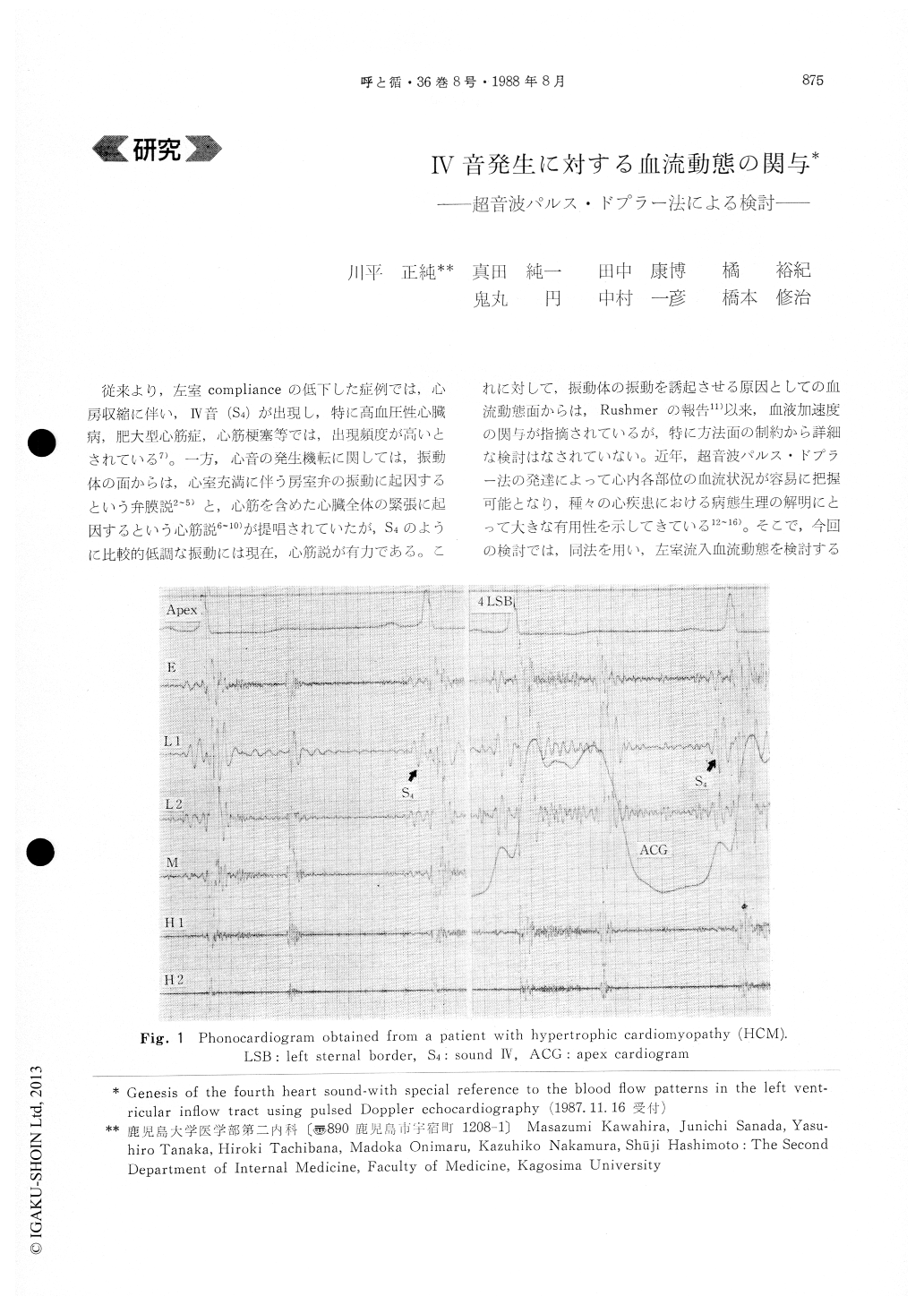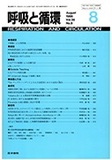Japanese
English
- 有料閲覧
- Abstract 文献概要
- 1ページ目 Look Inside
従来より,左室complianceの低下した症例では,心房収縮に伴い,IV音(S4)が出現し,特に高血圧性心臓病,肥大型心筋症,心筋梗塞等では,出現頻度が高いとされている7)。一方,心音の発生機転に関しては,振動体の面からは,心室充満に伴う房室弁の振動に起因するという弁膜説2,5)と,心筋を含めた心臓全体の緊張に起因するという心筋説6〜10)が提唱されていたが,S4のように比較的低調な振動には現在,心筋説が有力である。これに対して,振動体の振動を誘起させる原因としての血流動態面からは,Rushmerの報告11)以来,血液加速度の関与が指摘されているが,特に方法面の制約から詳細な検討はなされていない。近年,超音波パルス・ドプラー法の発達によって心内各部位の血流状況が容易に把握可能となり,種々の心疾患における病態生理の解明にとって大きな有用性を示してきている12〜16)。そこで,今回の検討では,同法を用い,左室流入血流動態を検討することにより,S4発生と血流動態の関連について解析を試みたので報告する。
In order to analyze the role of blood flow dyna-mics on the occurrence of the fourth heart sound (S4), blood flow patterns caused by the left atrial contraction in the left ventricular (LV) inflow tract were investigated in 60 old myocardial infarction (OMI, S4(+): 35 cases, S4(-): 25 cases), 27 hypertro-phic cardiomyopathy (HCM, S4(+): 18 cases, S4-: 9 cases), 15 hypertensive heart disease (HHD, S4 +: 10 cases, S4(-): 5 cases) and healthy subjects (S4(+):6 cases, S4(-): 9 cases), using pulsed Doppler echo-cardiography.
The results were as follows ; ① Acceleration rate (AcR) and deceleration rate (DcR) of the blood llow during the left atrial contraction were significantly higher in S4 (+) group than that in S4(-) group of OMI, HCM or HHD cases.
(OMI : AcR p<0.01, DcR p<0.05. HCM : AcR p<0.01, DcR p<0.01, HHD : AcR p<0.01, DcR p <0.01)
②In assessing the intensity of S4 before and after administration of Isosorbide Dinitrate (ISDN), the subjects were divided into three groups. That is, it was decreased in 5 of the 12 cases (1-ICM : 3 cases, OMI : 1 cases, IIHD 1 case), increased in 2 cases (OMI : 2 cases) or unchanged in the other 5 cases (HHD: 2 cases, HCM : 1 case, HCM com- p recated with OMI : 1 case, angina pectoris : 1 case).
③By comparison with hemodynamic findings, AcR and DcR were not correlated with pulmonaryartery wedge pressure (AcR r=0.13, DcR r=0.23) or LV end-diastolic pressure (LVEDP : AcR r=0. 32, DcR. r=0. 39).
On the other hand, these parameters were sig-nificantly correlated with atrial contrac ion to LVEDP
[LVEDP-pre a pressure/LVEDP×100].
(AcR r=0.50 p<0.01, DcR r=0.55 p<0.01)
④ In the limited cases, that had S4, AcR and DcR in OMI group were significantly higher than that n HCM group or HHD) group (OMI VS HCM: p<0.01, OMI VS HHD : p<0.01).
In conclusion, this study suggested the important role of accelerated blood to the occurrence of Si. It appeared that there was various severity of acceleration rate for causing S4 in each fundamental heart disease.
We believe that S4 was established by the in-balance between atrial contraction and LV function.

Copyright © 1988, Igaku-Shoin Ltd. All rights reserved.


